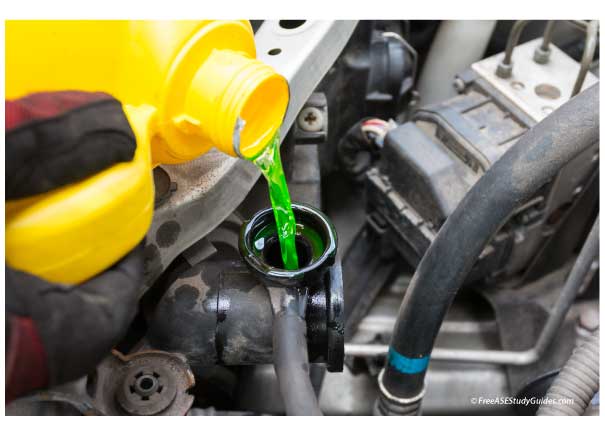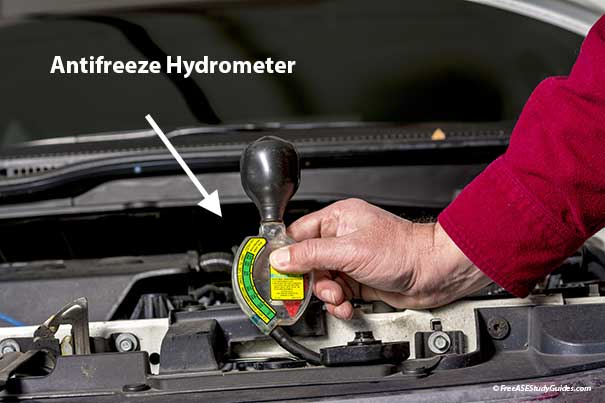Engine Coolant Testing

The cooling system requires a 50/50 mixture of antifreeze and water. Antifreeze protects the engine's cooling system from rust and deposits while keeping it from freezing during the winter and overheating in the summer heat. There are several ways technicians test the engine's coolant.
Hydrometer

Antifreeze hydrometers quickly indicate an engine's coolant's freezing and boiling points. There's a label attached to each side of the tester's see-through body. One side shows the coolant boiling point, and the other shows the freezing point.

Look for a reading of -34° F on the freeze point side and 265° F on the boiling point side of the tester. The see-through body of a hydrometer is handy for inspecting the condition of the coolant, looking for rust and contaminants.
Refractometer

Refractometers display the percentage of coolant to water. Drop a coolant sample onto the refractor's lens and close the shield. Peering through the lens displays a scale. The percentage of antifreeze to water is indicated on the scale where the blue-colored line meets the clear or white one. Coolant is conveniently manufactured and sold already mixed at a 50/50 ratio.